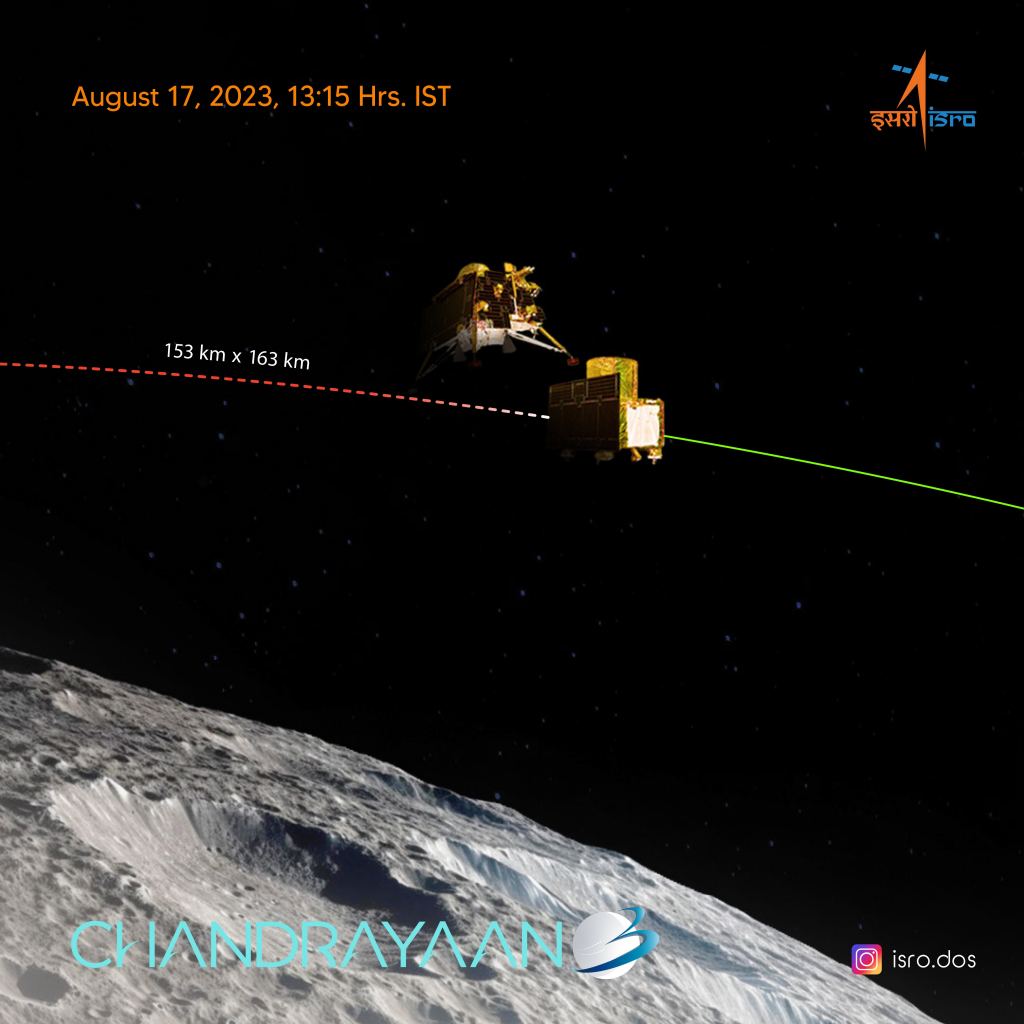On August 23, ISRO's Vikram lander detached from its propulsion module and made a soft landing near the Moon’s south pole region. The lander then deployed its Pragyan rover, and for two weeks the endearing little solar-powered rover performed marvelously, detecting water ice and characterizing the makeup of the lunar regolith before succumbing to the darkness and cold of the lunar night.
But since the rover mission ended, the propulsion module that brought it to the Moon has made a detour, performing a series of complex maneuvers that took it from a tight lunar orbit back to Earth orbit. This was possible because the module still had more than 100 kg of fuel, allowing scientists to conduct additional maneuvers and experiments.
Right now, the propulsion module (PM) is orbiting Earth at an altitude of 115,000 km (71,500 miles), well above geostationary orbit. ISRO said the mission team decided to use the available fuel in the propulsion module to derive additional information for future lunar missions. More specifically, this demonstration gave them the chance to test mission operation strategies for a future sample return mission.
The PM has had a busy and productive mission. While in lunar orbit for about a month, it wasn't just taking it easy. After the separation of the lander, the PM operated an on-board experiment, the Spectro-polarimetry of HAbitable Planet Earth (SHAPE) payload, designed to observe the Earth. Specifically, this instrument also provided scientists and engineers experience for future missions and research as its purpose was to study habitable planet-like features of Earth. These observations will be used by ISRO for future studies of exoplanets. Additionally, there was a special operation of the SHAPE payload on October 28, 2023 during the solar eclipse.
But because the spacecraft had such a precise orbit injection and optimal burn maneuvers, the amount of leftover fuel meant the engineers could do even more with the PM than originally expected. The PM was commanded to execute an orbit-raising maneuver at the Moon and then perform a Trans-Earth injection burn, which placed the PM in an Earth-bound orbit.
ISRO said the first orbit raising maneuver at the Moon was performed on October 9, 2023 to raise apolune altitude to 5,112 km from 150 km. The Trans-Earth injection (TEI) maneuver was performed on October 13, 2023, and as its orbit was slowly raised, the PM made four Moon flybys before departing Moon on November 10.
Currently, propulsion module is orbiting Earth with an orbital period of nearly 13 days, at 27 degrees inclination. Because of this high orbit, ISRO said there is no threat of close approach with any operational Earth orbiting satellites.
ISRO said these extra operations allowed them to plan and execute trajectory maneuvers to return from Moon to Earth, as well as develop software to plan and validate the maneuvers. They also planned and executed a gravity assisted flyby between two celestial bodies and, most notably they avoided an uncontrolled crash into the Moon's surface at the end of the life of PM, which met the requirements of creating no debris on the Moon.
Will its current high geostationary orbit be the Chandrayaan-3 PM's final trick? Who knows? The resourceful engineers might figure out another way to make use of this multi-purpose spacecraft.
 Universe Today
Universe Today

